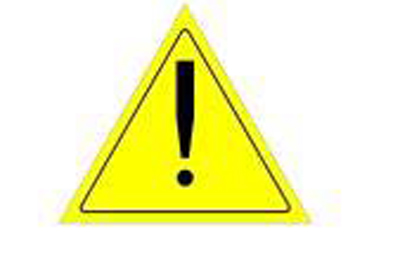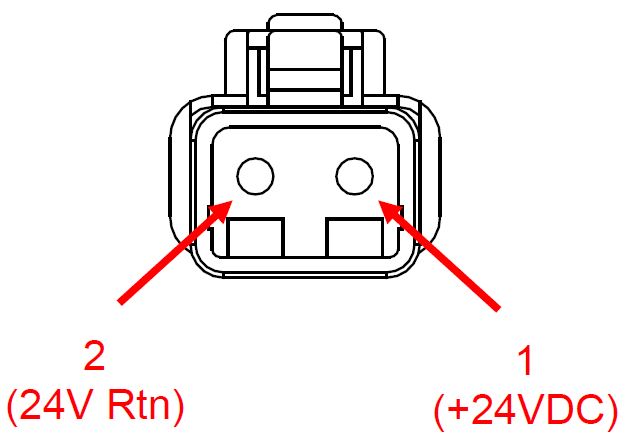Seakeeper 9 Installation Manual (90222-11); S/N 9-233-4900 to Current
3.2 Electrical Equipment Power Connections
230 VAC Power Source Requirements
- 230 VAC (nominal), 1 Phase, 50/60 Hz, 20 A
- For installations of more than one Seakeeper, a separate circuit breaker should be used for each Seakeeper Motor Drive Box.
Drive Box AC Power Input Connection Instructions
- 230 VAC Input Cable: 3 x 10 AWG (3 x 6 mm2 CSA), 10 ft. (3 m) length, Seakeeper supplied pre-installed.
- Locate 230 VAC Input Cable for AC power input to the Drive Box at the outboard of the Motor Drive Box cable glands.


Connections at AC Power Distribution Panel
- Connect 230 VAC Input Cable wires to a 20 A, double-pole Circuit Breaker at an AC power distribution panel according to Figure 20 above.
24 VDC Power Source Requirements
- One 24 VDC, 10 A (Customer supplied) for Seakeeper Control Power, AND
- One 24 VDC, 10 A (Customer supplied) for DC Seawater Pump.
- A separate breaker should be used for each Seakeeper.
DC Power Connection Instructions

Reversing polarity on the DC power input to the Seakeeper can result in damaging the electronics in the control system.
- 24 VDC, 10 A, 2 x 12 AWG (3 x 4.0 mm2 CSA) customer supplied.
- Install Seakeeper provided DC Power Input Cable, P/N 20248 (as shown in Drawing No. 90257).
- Route 24 VDC Power Cable to DC Power Distribution Panel.
- Terminate positive (B+, Red ) conductor to +24 VDC.
- Terminate negative (B-, Black) conductor directly to battery negative terminal.
- Before connecting cable to Seakeeper, check for proper voltage and polarity with a DC multimeter using Figure 21 below.
- Connect 24 VDC Input Cable to 24 VDC input receptacle on Seakeeper.
- Install Seakeeper provided DC Power Input Cable, P/N 20248 (as shown in Drawing No. 90257).

DC Seawater Pump 24 VDC Power Input Connection Instructions

Connecting the DC Seawater pump in any other manner than recommended by Seakeeper may cause internal failure.
- Install Seawater Pump Input Cable (P/N 30327) to Seakeeper 9 “SW Pump DC In” (as shown in Drawing No. 90257) with overcurrent protection corresponding to seawater pump selected.
- Connect the 16AWG positive conductor (Red) through dedicated overcurrent protection device (customer supplied), maximum of 10 A, to dedicated battery isolation switch.
- Connect the 16 AWG negative conductor (Black) directly to battery negative terminal or DC main negative bus bar.
- Before connecting Seawater Pump Input Cable to Seakeeper, check for proper voltage and polarity with a DC multimeter using Figure 8 below.

- Connect Seawater Pump Input Cable to Seawater Pump 24 VDC In connector on the Seakeeper, DEUTSCH DT04-2P connector.
DC Seawater Pump 24 VDC Power Output Connection Instructions
- Connect Seawater Pump Output Cable to the Seakeeper 9 “SW Pump 24VDC Out” for DC power to the seawater pump.
- Seawater Pump Output Cable is a 2 x 16 AWG cable, 16 ft (5m) length with a size 16 female Deutsch plug.
- Pumps rated at 24 VDC, 10 A maximum, customer-supplied, must be configured with a Deutsch DT series, 2-pin receptacle to mate with the connector shown in Figure 23.

- Seawater Pump Output Cable must be routed and installed in the vessel from the Seakeeper 9 “SW Pump 24VDC Out” Deutsch connector (pins end) to the DC seawater pump cable Deutsch connector (socket end).
- Connect Seawater Pump Output Cable plug end (socket end) to the customer-supplied receptacle end (pins end). The recommended wiring is shown in Figure 24.
- Contact Seakeeper if desired to install customer-supplied relay on Seawater Pump Output Cable to power seawater pump.
